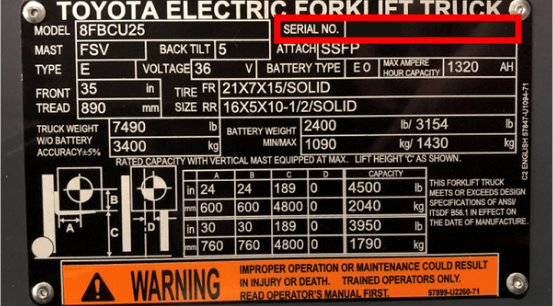Environmental Obstacles: Handling Slopes And Inclines With Two-Speed Transmission Forklifts

Outdoor manufacturing environments, construction sites, and storage spaces present clear and immediate need for forklifts with the ability to handle massive materials quickly and efficiently. IC pneumatic tire forklifts have long been the choice to handle pathways of packed dirt and weathered pavement. And while electric models have now entered the U.S. market that can handle similar tasks (i.e. Toyota’s 80-Volt Electric Pneumatic), these internal combustion models currently provide the most popular and often successful solution to outdoor, heavy-lifting needs.
But outdoor work sites are often met with obstacles that are not present in indoor workspaces and present difficulties to efficient practices when lifting heavy building and manufacturing materials. Slopes, inclines, and ramps while operating outdoors are common, and businesses in outdoor industries are facing the same increasing demands for faster results as their indoor counterparts. Too often, companies aren’t aware of the impact that the correct transmission choice can have on their bottom line. While one-speed transmissions certainly have their merit, there are many customers who demand increased speeds on an incline to help increase throughput and keep up with their climbing demand. Sometimes, the decrease in speed reduces throughput at rates that can have a severe impact on the bottom line.
When you are faced with inclines and slopes in often traveled routes in your outdoor environments, procuring a forklift with a two-speed transmission with immense lifting capacity can ensure that material transportation speed is maximized.
Why a Two-Speed Transmission Forklift?
The first priority when approaching a slope or incline should always be safety. The safe travel speed on a slope or incline will always be dictated by your specific application and environmental conditions. However, two-speed transmissions, like those that come standard on Toyota’s Mid-IC Pneumatic and Large IC Pneumatic, ensure that travel speed can be maximized on a slope. By maintaining the high-speed mode even while loaded on an incline, the two-speed transmission provides enough power that speed reduces a minimal amount compared to driving on the incline in a lower gear. In fact, Toyota two-speed transmissions can increase grade travel speed by 25% – 60% and gradeability by 37% – 50% in appropriate applications. And the two-speeds function in both forward and reverse.
Generally, two-speed transmissions shift automatically between gears and the Toyota designed transmission on Toyota’s Mid-IC Pneumatic and Large IC Pneumatic models is no different. The electronically controlled shift point effectively takes away the need for an operator to have to remember to manually shift, ensuring optimal productivity and fuel efficiency at all times. Have a more delicate load where you want to keep the forklift from shifting into second gear? Toyota’s two-speed transmission comes standard with a first-gear lock switch on the steering column that, when activated, will keep the forklift locked in first gear to prevent it from automatically shifting.
What Else Should You Look for in a Two-Speed Transmission Forklift?
When assessing a two-speed transmission forklift for potential investment, there are a few factors to consider to make sure you’re getting the highest quality forklift available. First, consider if the forklift has the ability to start in second gear. This is particularly prevalent with manual transmissions where the forklift is left in a higher gear when it is turned off or comes to a stop and then consequently started in a lower gear the next time the forklift is operated. Many operators even grow complacent and leave the transmission in high gear at all times, which places undue strain on the drivetrain, reduces efficiencies, and requires a greater amount of fuel. Make sure that the forklift starts in first-gear in order to protect the longevity of the equipment and your fuel economy.
Consider whether both the transmission and the other key components of the forklift are easily serviceable. All forklifts require service, and an even bigger detriment to speed and efficiency than slopes and inclines is downtime. Is the transmission easily accessible for diagnosis and maintenance? Is the same true of common service parts like hoses and filters? Assessing the serviceability of the truck can make the difference between a good long-term investment and a big headache.


